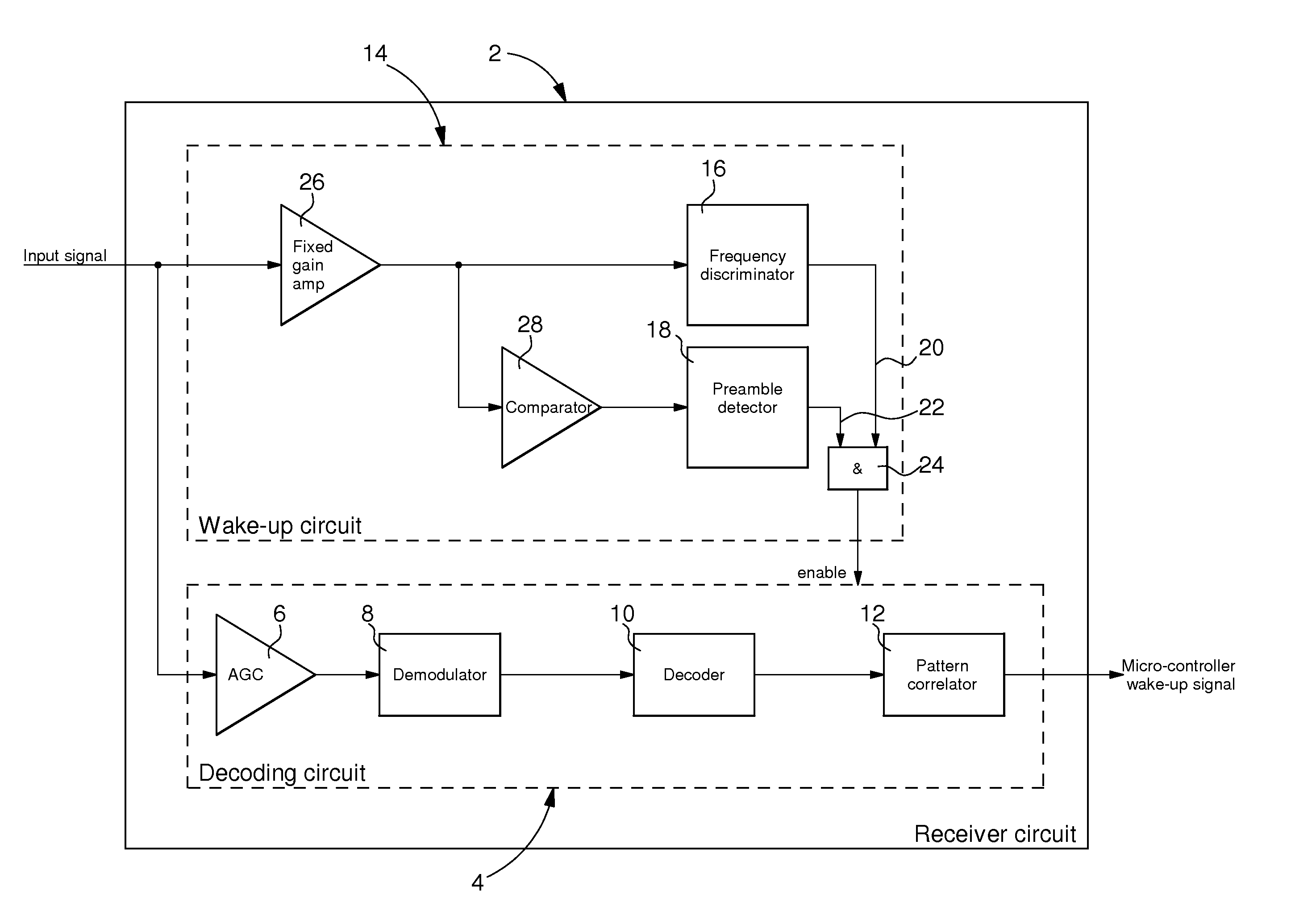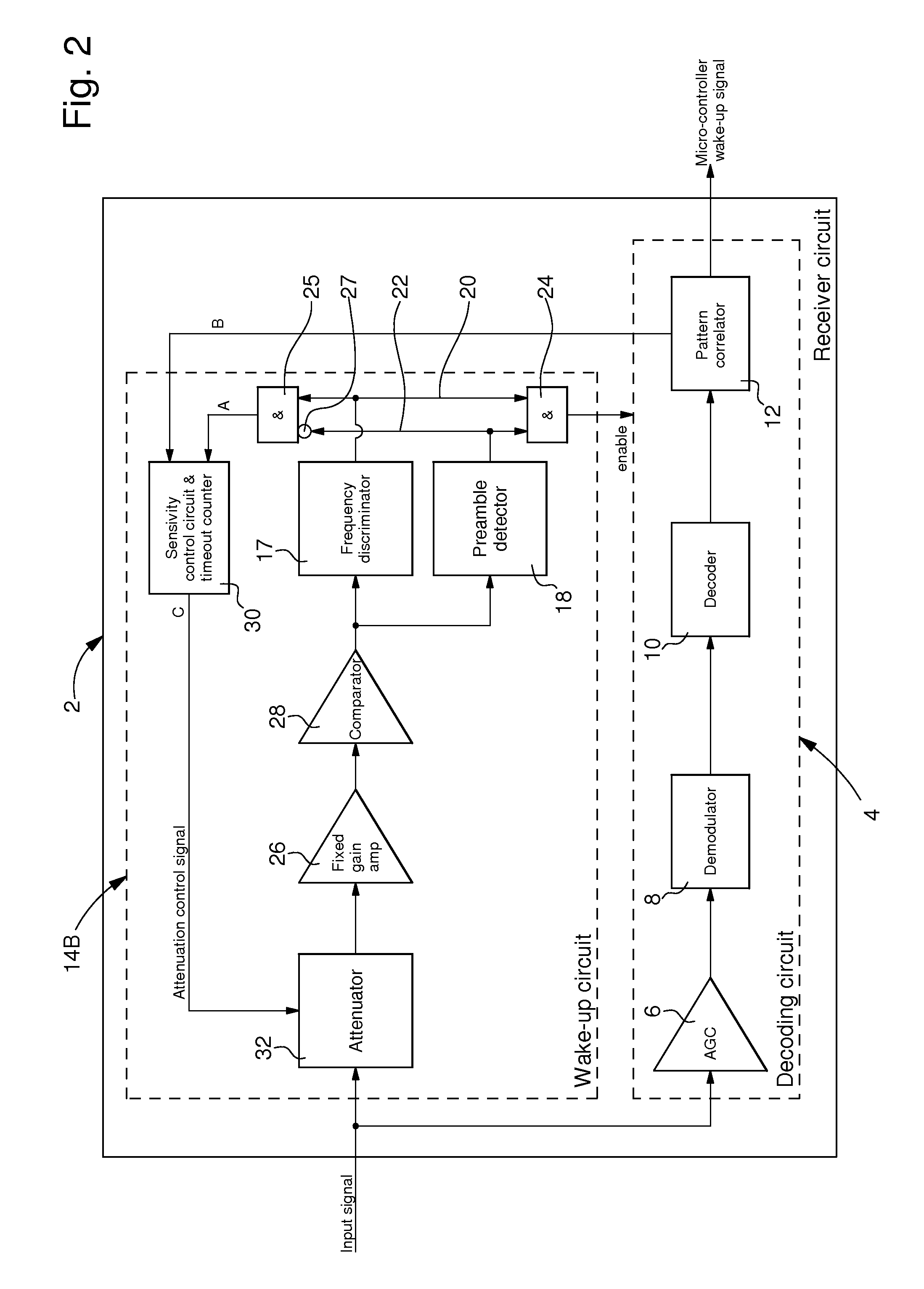Transponder with receiving means having a low electrical consumption in a listening mode
a transponder and listening mode technology, applied in the field of transponders, can solve the problems of low sensitivity of the passive envelope detector itself, relatively large electric power consumption of the amplifier, and low sensitivity of the transponder
- Summary
- Abstract
- Description
- Claims
- Application Information
AI Technical Summary
Benefits of technology
Problems solved by technology
Method used
Image
Examples
second embodiment
[0041]With the help of FIG. 9, the invention will be described. The transponder comprises a receiver circuit 2 comprising an entry amplifier formed by an AGC amplifier 6, a decoding circuit 5 and a wake-up circuit 14A. The decoding circuit 5 comprises an active demodulator 8 formed by an active envelope detector 8A followed by an analog-to-digital converter 8B (ADC). Such an active demodulator is preferred because it has a high sensitivity. However, this active demodulator has a relatively high electrical consumption (more than 1 μA and possibly around 1.2 μA). The digital part 9 of the decoding circuit comprises a decoder 10 and a pattern correlator 12. It is to be noted that this digital part could be arranged in a logic circuit having further functions, i.e. be part of a logic unit. This logic part of the decoding circuit 5 has also a relatively high electrical consumption (e.g. around 1 μA). Thus, the decoding circuit 5 generally consumes more than two microamperes (>2 μA). Acco...
fourth embodiment
[0064]An improved fourth embodiment will now be described with the help of FIGS. 7 and 8. Already described elements will not be described again in detail hereafter. The transponder of FIG. 7 essentially differs from the one of FIG. 2 in that the sensitivity control unit is further implemented to reduce, if the sensitivity is greater than a minimum level, the sensitivity of the wake-up circuit 14C when the carrier frequency of a received RF signal is above the valid frequency range (Frequency ok) or in a second frequency range higher than this valid frequency range. To that end, the frequency discriminator 56 is arranged for distinguish between a first frequency of the carrier of a RF signal within a first frequency range corresponding to a valid or correct frequency (F=ok) and a second frequency which is above this first frequency range or within a second frequency range located above the first one. Further, an ‘OR’ logic element (OR gate) 60 is implemented in the sensitivity contr...
PUM
 Login to View More
Login to View More Abstract
Description
Claims
Application Information
 Login to View More
Login to View More - R&D
- Intellectual Property
- Life Sciences
- Materials
- Tech Scout
- Unparalleled Data Quality
- Higher Quality Content
- 60% Fewer Hallucinations
Browse by: Latest US Patents, China's latest patents, Technical Efficacy Thesaurus, Application Domain, Technology Topic, Popular Technical Reports.
© 2025 PatSnap. All rights reserved.Legal|Privacy policy|Modern Slavery Act Transparency Statement|Sitemap|About US| Contact US: help@patsnap.com



